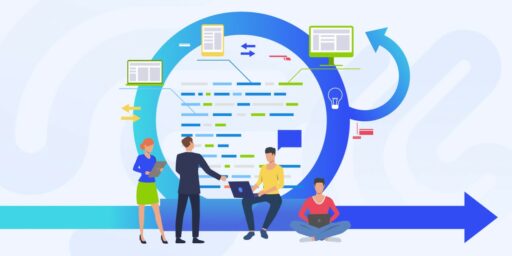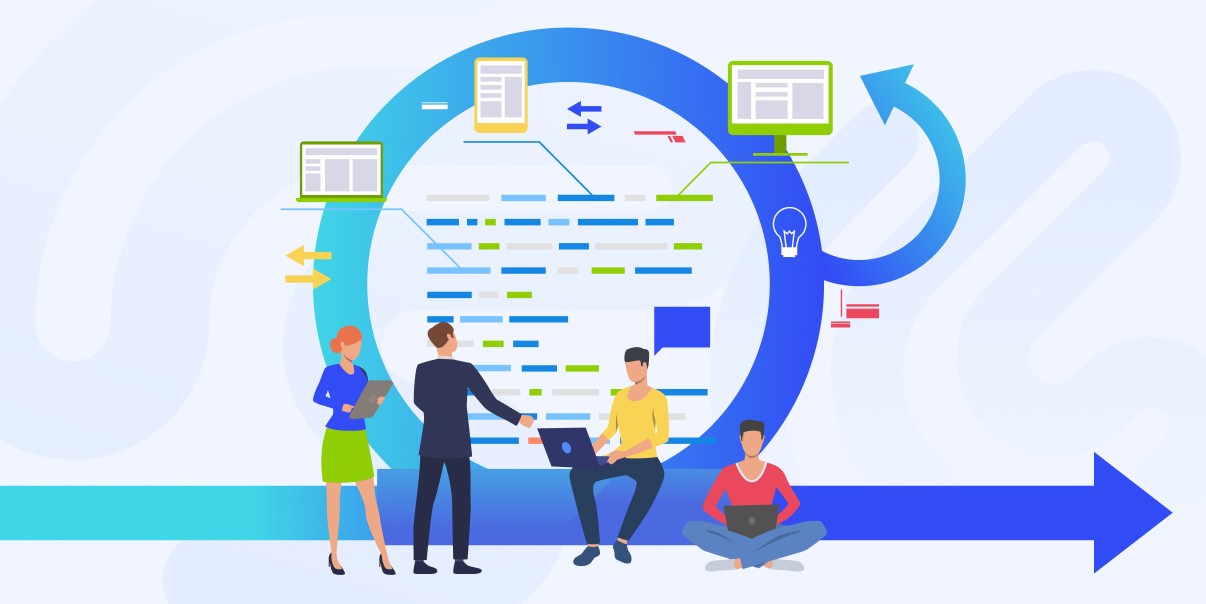Agile software development methodologies have revolutionized the way software is created, allowing for flexibility, collaboration, and rapid delivery. This guide explores the key concepts, frameworks, and practices of agile methodologies, providing insights and practical knowledge for teams looking to enhance their development processes.
Table of Contents
- Introduction to Agile Software Development
- The Agile Manifesto and Principles
- Key Agile Methodologies
- Scrum
- Kanban
- Lean
- Extreme Programming (XP)
- Benefits of Agile Methodologies
- Challenges in Agile Implementation
- Agile Tools and Software
- Case Studies: Agile in Action
- Future of Agile Software Development
- Conclusion
1. Introduction to Agile Software Development
Agile software development emerged in the early 2000s as a response to the limitations of traditional waterfall methodologies. Waterfall projects often suffer from rigid structures and lengthy timelines, making it difficult to adapt to changes or client feedback. Agile, in contrast, promotes an iterative approach where development is broken into smaller, manageable chunks known as “sprints.” Each sprint allows teams to assess progress and pivot as necessary.Agile methodologies emphasize collaboration among cross-functional teams, ensuring that developers, testers, and stakeholders work closely together throughout the software development lifecycle. This approach fosters transparency, increases accountability, and enhances the quality of the final product.
2. The Agile Manifesto and Principles
The Agile Manifesto, published in 2001 by a group of 17 software developers, outlines the core values and principles of agile development. The manifesto prioritizes:
- Individuals and interactions over processes and tools.
- Working software over comprehensive documentation.
- Customer collaboration over contract negotiation.
- Responding to change over following a plan.
These values are supported by 12 principles that guide agile teams, such as delivering customer value early and continuously, welcoming changing requirements, and maintaining a sustainable work pace. The manifesto emphasizes the importance of human-centric approaches, where collaboration and communication take precedence over strict adherence to processes.
3. Key Agile Methodologies
Scrum
Scrum is one of the most widely used agile frameworks. It divides projects into time-boxed iterations called sprints, typically lasting two to four weeks. During each sprint, a cross-functional team works to deliver a potentially shippable product increment. Key elements of Scrum include:
- Roles: Scrum defines specific roles such as the Product Owner (responsible for defining project goals), Scrum Master (facilitator of the Scrum process), and Development Team (cross-functional group that executes the work).
- Events: Scrum involves several key events, including Sprint Planning, Daily Standups, Sprint Review, and Sprint Retrospective, each serving a distinct purpose in promoting collaboration and continuous improvement.
- Artifacts: Scrum creates artifacts such as the Product Backlog (a prioritized list of project requirements) and the Sprint Backlog (tasks selected for the current sprint).
Kanban
Kanban is a visual management method that focuses on workflow efficiency and continuous delivery. Unlike Scrum, Kanban does not prescribe fixed iterations but instead uses a visual board to represent work in progress (WIP). Key aspects of Kanban include:
- Visual Workflow: Teams use a Kanban board to visualize tasks, often categorized into columns like “To Do,” “In Progress,” and “Done,” allowing for easy tracking of project status.
- WIP Limits: By setting limits on the number of tasks in progress at any given time, Kanban helps teams identify bottlenecks and improve overall flow.
- Continuous Delivery: Kanban supports the idea of continuous delivery, enabling teams to release software as soon as it meets quality standards, rather than waiting for the completion of an entire sprint.
Lean
Lean software development is derived from Lean manufacturing principles, focusing on maximizing value while minimizing waste. Key principles of Lean include:
- Eliminate Waste: Identify and remove activities that do not add value to the customer, such as unnecessary documentation or excessive meetings.
- Build Quality In: Emphasize quality at every stage of development, preventing defects rather than fixing them later in the process.
- Deliver Fast: Aim for rapid delivery of features, enabling teams to gather feedback and make adjustments quickly.
Extreme Programming (XP)
Extreme Programming (XP) is an agile methodology that emphasizes technical excellence and continuous improvement. Key practices of XP include:
- Pair Programming: Two developers work together at one workstation, enhancing code quality through collaborative problem-solving.
- Test-Driven Development (TDD): Developers write automated tests before writing the corresponding code, ensuring that new features meet specifications.
- Continuous Integration (CI): Code changes are integrated and tested frequently to detect issues early and maintain a stable codebase.
4. Benefits of Agile Methodologies
Agile software development offers numerous benefits, making it a popular choice among organizations. Some of the key advantages include:
- Flexibility and Adaptability: Agile methodologies allow teams to quickly respond to changing requirements and customer feedback, making it easier to pivot when necessary.
- Improved Collaboration: The emphasis on teamwork and communication fosters collaboration among team members and stakeholders, leading to better alignment on project goals.
- Faster Time to Market: By delivering software in smaller increments, teams can release features more quickly, providing value to customers sooner.
- Higher Quality Products: Continuous testing and feedback loops help identify and address issues early in development, resulting in higher-quality software.
- Increased Customer Satisfaction: Agile methodologies prioritize customer involvement, ensuring that the final product aligns with their needs and expectations.
5. Challenges in Agile Implementation
Despite its many benefits, implementing agile methodologies can present challenges. Some common obstacles include:
- Cultural Resistance: Shifting to an agile mindset may be difficult for teams accustomed to traditional waterfall approaches, leading to resistance or misunderstanding.
- Lack of Management Support: Successful agile implementation requires buy-in from leadership. Without support, teams may struggle to adopt agile practices fully.
- Inadequate Training: Teams that lack proper training in agile methodologies may struggle to apply principles effectively, leading to confusion and misalignment.
- Scaling Agile: Ensuring that agile practices are consistently applied across larger organizations can be complex. Frameworks like SAFe (Scaled Agile Framework) aim to address this challenge by providing guidelines for scaling agile practices.
6. Agile Tools and Software
To support agile practices, numerous tools and software solutions are available. These tools help teams manage their workflows, track progress, and enhance collaboration. Some popular agile tools include:
- Jira: A widely-used project management tool that allows teams to create user stories, track tasks, and manage sprints effectively.
- Trello: A visual collaboration tool that uses boards, lists, and cards to help teams organize tasks and projects in a flexible manner.
- Asana: A task management software that enables teams to plan, organize, and track their work, facilitating collaboration and accountability.
- Slack: A communication platform that enhances team collaboration through channels, direct messaging, and integration with other tools.
7. Case Studies: Agile in Action
Case Study 1: Spotify
Spotify, the music streaming giant, employs a unique agile approach known as “Squad Framework.” Squads are autonomous, cross-functional teams that operate like mini-startups, focusing on specific features or projects. This structure promotes innovation and quick decision-making, allowing Spotify to release new features rapidly while maintaining high-quality standards.
Case Study 2: ING Bank
ING Bank adopted agile methodologies to enhance its digital banking services. By implementing agile practices across its teams, ING improved collaboration, accelerated delivery timelines, and increased customer satisfaction. The bank’s success demonstrates that agile can be effectively applied in heavily regulated industries, leading to substantial performance improvements.
8. Future of Agile Software Development
As technology continues to evolve, so will agile methodologies. The future of agile software development may include:
- Integration with AI and Automation: Tools that leverage artificial intelligence to enhance project management and automate repetitive tasks could streamline agile processes further.
- Hybrid Approaches: Organizations may adopt hybrid models that combine agile with other methodologies, tailoring processes to meet their unique needs.
- Increased Focus on Remote Collaboration: The rise of remote work has underscored the importance of tools and practices that facilitate collaboration across distributed teams, which will likely shape the evolution of agile practices.
9. Conclusion
Agile software development methodologies have transformed the way teams create and deliver software. By emphasizing flexibility, collaboration, and customer feedback, agile practices enable organizations to respond rapidly to changing demands and deliver higher-quality products. While implementing agile can present challenges, the benefits often outweigh the obstacles, making it a compelling choice for teams aiming to enhance their development processes. As the software landscape continues to evolve, agile methodologies will remain a critical component of successful software development strategies.
This article serves as a comprehensive guide to Agile Software Development Methodologies, covering essential concepts, methodologies, benefits, challenges, and real-world applications. The content is designed to be informative and engaging, providing readers with a thorough understanding of agile practices and their implications in the software development industry.





